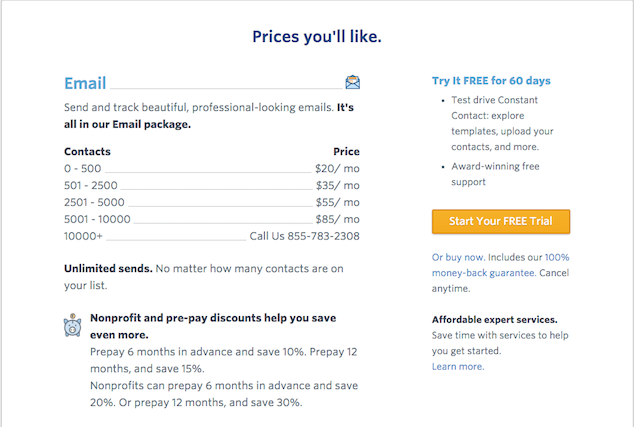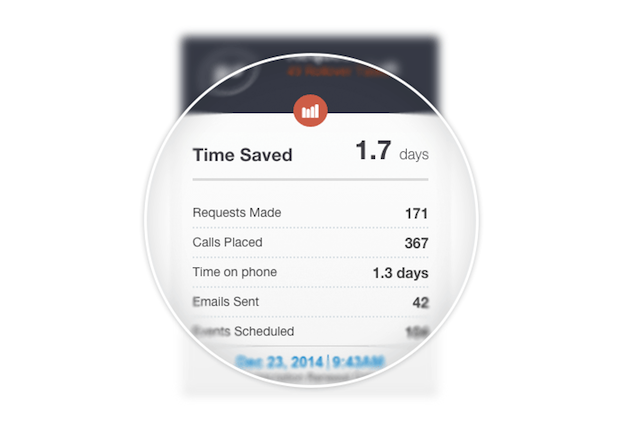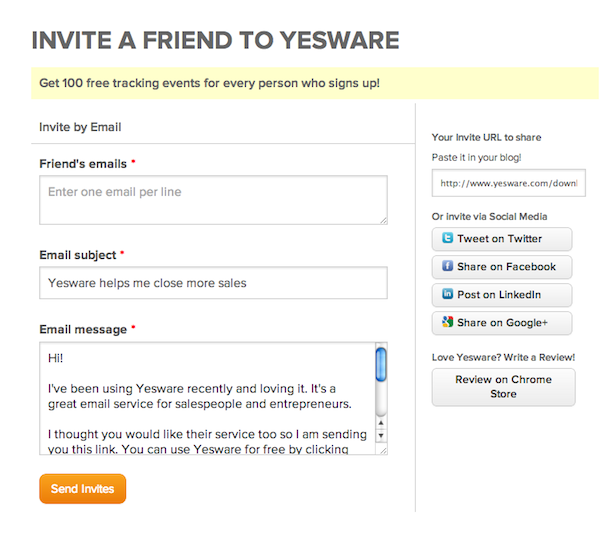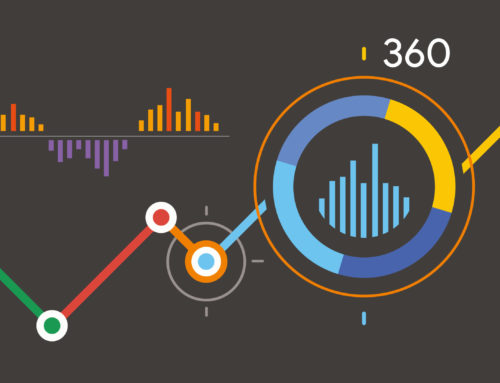Ever feel like you can’t keep up?
Practically everyone has felt like this one time or another. SaaS business owners have it especially tough.
Sometimes it feels like you’re on an endless treadmill. You’re running as hard as you can just to replace customers who slip through the cracks. And you can’t dare let up no matter how exhausted you are. Otherwise your business starts shrinking instead of growing like you need it to.
Getting ahead seems out of the question when you’re working as hard as you can just to stay even with all the people who are leaving.
Your SaaS churn rate, the percentage of customers (or recurring revenue) that leave your business over a specified duration, is a vital sign of your business. It’s one of the best metrics you can use to value your company and assess your performance.
Here’s why it matters—and how to keep your business healthy and profitable.

Photo Credit: skoeber via Compfight cc
Churn Rates: a Basic Overview
You can reference churn rate in two different ways: 1) user churn and 2) revenue churn.
User churn measures the percentage of users who cancel their subscriptions over a certain time period. So, if you have 300 users at the beginning of May and a monthly churn rate of 3%, 9 users would cancel their subscriptions by the end of the month.
Revenue churn measures the percentage of recurring revenue lost over a certain time period. So, if you had $20,000 monthly revenue at the beginning of May and a monthly revenue churn rate of 3%, you’d end May making $600 less.
The higher your churn rate, the more pressure there is to constantly acquire new customers. Because customers have a low customer lifetime value in high-churn environments, keeping up with losses becomes the primary focus of your business.
High churn rates take your attention away from other crucial areas of business like product development, delivering stellar customer service, and market research.
There really isn’t a universal “acceptable” churn rate. The best guideline: keep your churn rate as low as possible. A lot depends on what you’re selling and how much it costs to acquire new customers. A 5% churn rate could be a death knell for an enterprise SaaS business, but sustainable for a business with $10 monthly subscription fees.
How to Handle High Churn
Getting your churn rate down to zero (keeping customers forever) would be nice, but it isn’t going to happen. Turnover is just part of operating any business…
But you can reduce your churn to a shadow of its former self. You can limit your turnover and get more out of every customer you acquire. With a low enough churn rate, your business can grow sustainably—even during rough patches where new customers aren’t coming in the door.
Addressing your churn rate is like paying off credit card debt: it’s top priority for any savvy SaaS business owner.
Here are a few ways how to do it:
5. Reassess Your Pricing Model
If your churn rate has you worried, there might not be anything wrong with your service yourself…
It might come down to how you’re packaging and selling it.
Most SaaS businesses create price tiers to give customers the option to choose a level of service that fits their needs. That’s a smart strategy…as long as what differentiates the price between tiers matters to your customers.
Unfortunately, a lot of SaaS businesses use the number of users as the deciding factor in setting different price tiers. But in many cases, the maximum number of users just isn’t important to their target customers.
What do I mean by this?
Let’s say you’re selling a time tracking app to help people boost productivity. How many people who can access the app probably doesn’t matter. Tracking—and boosting—productivity is typically done at an individual level. Yet offering different features (like reporting or more detailed time tracking functionality) matters to those target customers.
Distinguishing price tiers based on reporting or other features (things that matter to target customers) makes it much easier to justify higher prices and keep customers around. They’re okay with paying more because they’re getting significantly more value from your service.
When your key price differentiators don’t align with the value your customers get from your service, however, you’re setting yourself up for customer dissatisfaction and high churn. People who sign up for higher tier options will feel like they’re getting ripped off because they end up paying more for things that don’t matter to them.
4. Set Realistic Customer Expectations from the Start
In an effort to onboard as many new customers as possible, many SaaS businesses set themselves up for high churn rates if they aren’t careful.
It’s tempting to say whatever it takes to get new customers to sign up—even if that means hyping your software or making promises you ultimately can’t fulfill.
This might make for high customer acquisition rates. But those high acquisition rates come at a cost: unrealistic customer expectations. You end up planting ideas in people’s heads about all these wonderful things your software can do (even if some of them aren’t true). Customers get disappointed when their experiences don’t live up to the hype.
On the other hand, not promising prospects the moon might make for lower customer acquisition rates, but the people you do attract are more likely to be satisfied and stick around longer. Being as persuasive as possible, but honest about your software’s features and capabilities, creates more realistic customer expectations.
Take a look how Constant Contact does this for their email marketing packages:

How many contacts a customer can have for each pricing tier is extremely clear. Constant Contact doesn’t leave any room for confusion—or unrealistic expectations to seep in.
You won’t have to work yourself to the bone to meet expectations if you don’t over-promise. Instead, put yourself in the position to over-deliver on a set of more modest expectations. It’s a recipe for long-term customer satisfaction—and lower churn.
Often, there isn’t a major issue with the SaaS software itself. The problem lies in how that software is marketed. Saying whatever it takes to acquire customers (with little regard for your ability to deliver on promises) puts yourself in a hole you might never be able to dig out of. But being honest and realistic sets you up for satisfied customers and sustainable growth.
3. Send Consistent “Value Reminders”
Once something isn’t “new” anymore, we have a tendency to take it for granted.
It doesn’t matter if we’re talking about cars, gadgets, or relationships. It even goes for your software as well.
When this goes on long enough, customers who used to be happy at the value you were delivering decide to jump ship. They forget just how important your software was in their lives—solely due to the time they’ve used it and not being reminded of its value.
But what if, instead of letting customers’ fascination with your software fade over time, you sent out little reminders to let them know just how much they’re getting from your business?
Take the computer I’m typing this on for example. I’ve had it for a few years now, and I work on it practically every day. Honestly, it’s been quite awhile since I’ve thought about how much value it adds to my life…
But what if my computer generated a weekly report outlining the calculations it’s done, the files I created that week, how many words I typed, and so on? Looking at this report would remind me of just how much I’m getting from my computer.
One company doing a great job of this is Fancy Hands, a personal assistant service. Every time a customer logs in to their account, they see the value they’ve gotten in visual form:

Image credit: Groove
How are you reminding customers of the value you’re already providing? Don’t trust they’ll remember after a few months—once the “new car smell” has worn off. Sometimes all it takes to reduce churn rate is simply brining to people’s attention what they’re already getting.
2. Reward Loyal Customers and Persuade Them to Engage Even More
When most people talk about reducing churn, they’re focused on limiting the customers (and revenue) going out the door every month.
That’s a crucial element of your success…
But it isn’t the only way to attack your churn problem.
Besides getting flighty customers to stick around longer, you can attack churn from another angle. You can motivate your most engaged customers to buy even more from you, tell their friends about you, and grow your business.
So you can fight the battle against churn on two fronts: 1) stopping people from canceling subscriptions, and 2) motivating your best customers to invest in your business even more.
Here are a few ways how you could do this:
- Loyalty discounts. Give your most engaged customers a special discount to renew their subscriptions, preferably for a longer term. This shows them you value their business and motivates them to continue engaging with your software.
- Referral programs. Motivate power users to build your marketing machine for you! Offer free upgrades, months of service, or monetary discounts for users who refer your software to friends. This allows you to save money on marketing and turn happy customers into brand advocates.
- Discounted upgrades. Offer active customers special opportunities to upgrade to higher price tiers and/or usage plans. Sometimes a little discount (or time-sensitive offer) is all it takes to get engaged customers to make that next step commitment.
Yesware, a business that helps customers close sales, entices referrals by offering free tracking events for every successful one. And they make the process simple by offering a referral “template” (auto-filled text that makes it almost effortless to email your friends):

Image credit: Saasquatch
Instead of just asking yourself how to keep more customers around, ask yourself how you can convince engaged customers to engage even more. Attacking high churn rates on two fronts opens up a new options and creative strategies to grow your business.
1. Hone in on Your “Red Flag” Metrics
SaaS businesses have more access to data and analytics than ever before.
There are thousands of metrics you could look at to see how well you’re doing with your customers and brainstorm new ways to improve your business…
But that can get overwhelming quickly, even for the most tech-savvy business owner. That’s why identifying your “red flag” metrics—the few that are closely linked to customers who churn—is incredibly valuable.
How does a customer who’s about to churn behave?
Are there any warning signs?
Sometimes happy customers just up and cancel, but it usually doesn’t go that way. Churn is usually the result of a gradual process. If you figure out what that process is—and how to get in front of it—you can avoid problems before it’s too late.
To make your red flag metrics easier to identify, focus on customer behavior during their first few months doing business with you. A lot of churn happens during that time. It gradually tapers off after that.
A few examples of potential “red flag” metrics:
- How often a customer logs in to your software over a certain time period
- The average time a customer spends logged in during each session
- The average time a customer spends during software installation/initialization
- How many users the customer associates with your software
- Etc.
Groove, suffering from around a 4.5% churn rate, reassessed their business and found two key red flag metrics: the length of a user’s first session in Groove and their frequency of logins during the first 30 day period.
They changed their strategy to address these red flag situations, sending emails to customers whose behavior fit the pattern that usually ended in churn. These small adjustments helped Groove reduce their churn rate by an astonishing 71%.
Your red flag metrics probably won’t be the same as Groove’s. But they’ll probably present themselves early and often. Addressing each red flag individually can add up to huge reductions in your churn rate, and it makes the thought of “reducing churn” seem less daunting too.
Battling Churn: a Key Part in Any Winning Conversion Rate Optimization Strategy
Trying the tactics above can help you fight SaaS churn and set your business on a path for growth.
With that said, the most practical way to implement these tactics is one at a time. Instead of trying to apply all of them at once, make the most of your limited time by focusing on one, optimizing it, and then moving on to other tactics.
Churn isn’t going away. And that’s okay, if you’re willing to commit to churn reduction as a key element of your conversion rate optimization strategy. Just as you optimize your software and marketing, you can optimize keeping customers loyal and happy.
The result: you cut down your churn rate to a sliver of its former self. You free up money and time, and you build a better future for your business from stable ground instead of quicksand.
How have you fought churn in your business? Leave a comment below and share your experience!



